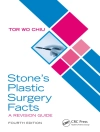The concept of expressing acidity as the negative logarithm of the hydrogen ion concentration was defined and termed p H in the beginning of the 20th century. The general usefulness of the p H concept for life science was recognized and later gained importance to analytical research. Reports on results of p H measurements from living skin established the term acid mantle – the skin’s own protective shield that maintains a naturally acid p H. It is invisible to the eye but crucial to the overall wellbeing of skin. Chronic alkalization can throw this acid mantle out of balance, leading to inflammation, dermatitis, and atopic skin diseases. It is therefore no surprise, that skin p H shifts have been observed in various skin pathologies. It is also obvious that the p H in topically applied preparations may play an important role. Optimal p H and buffer capacity within topical preparations not only support stability of active ingredients and auxiliary materials, but may also increase absorption of the non-ionized species of an acidic or a basic active ingredient. They may even open up opportunities to modify and "correct" skin p H and hence accelerate barrier recovery and maintain or enhance barrier integrity. Further efforts are needed to standardize and improve p H measurements in biological media or pharmaceutical/cosmetic vehicles to increase and ensure quality, comparability, and relevance of research data. In this volume, we present a unique collection of papers that address past, present and future issues of the p H of healthy and diseased skin. It is hoped that this collection will foster future efforts in clinical and experimental skin research.
Abels & Maibach
pH of the Skin: Issues and Challenges [PDF ebook]
pH of the Skin: Issues and Challenges [PDF ebook]
Köp den här e-boken och få 1 till GRATIS!
Språk Engelska ● Formatera PDF ● ISBN 9783318063851 ● Redaktör Abels & Maibach ● Utgivare S. Karger ● Publicerad 2018 ● Nedladdningsbara 3 gånger ● Valuta EUR ● ID 6822715 ● Kopieringsskydd Adobe DRM
Kräver en DRM-kapabel e-läsare












